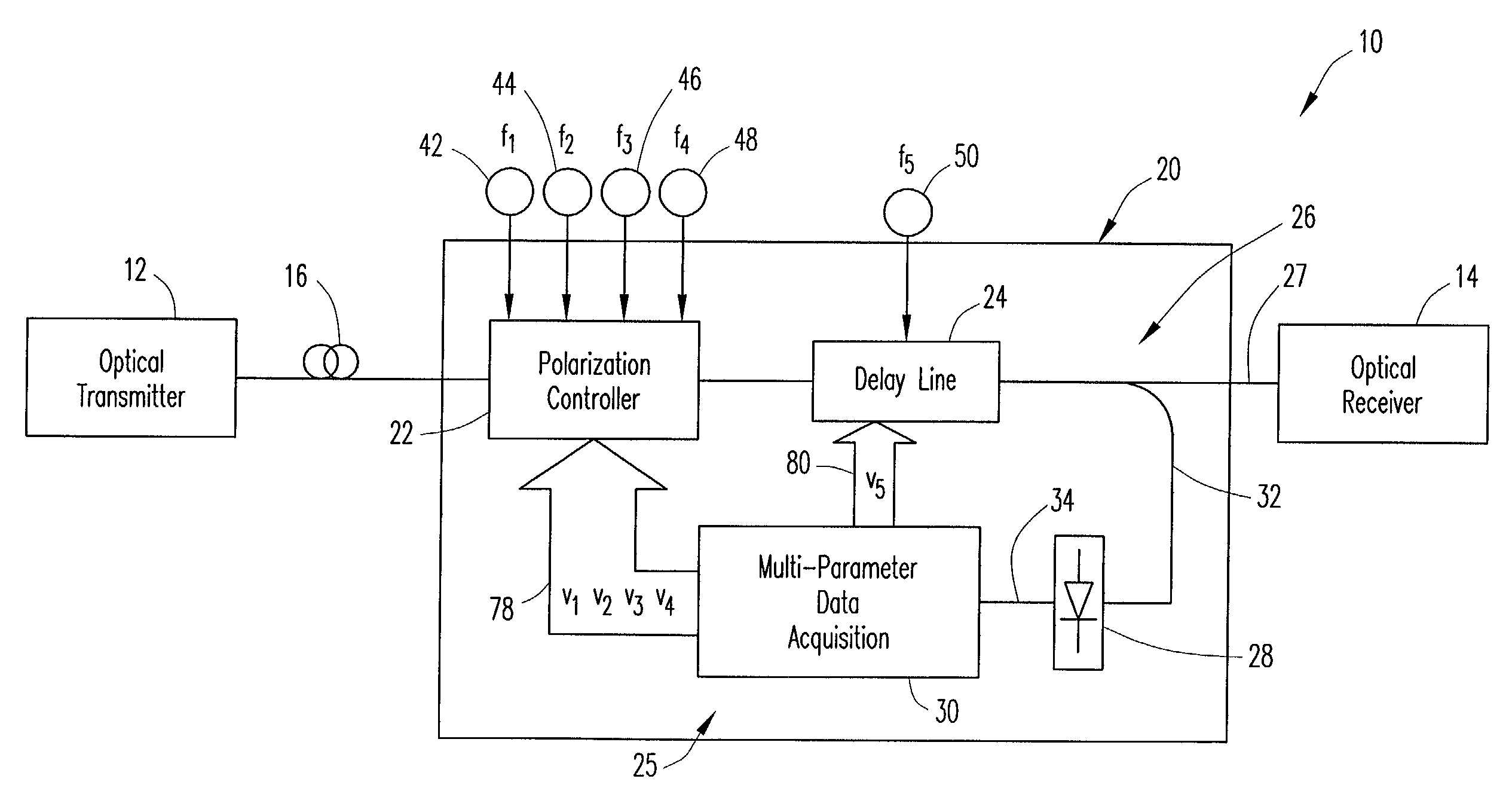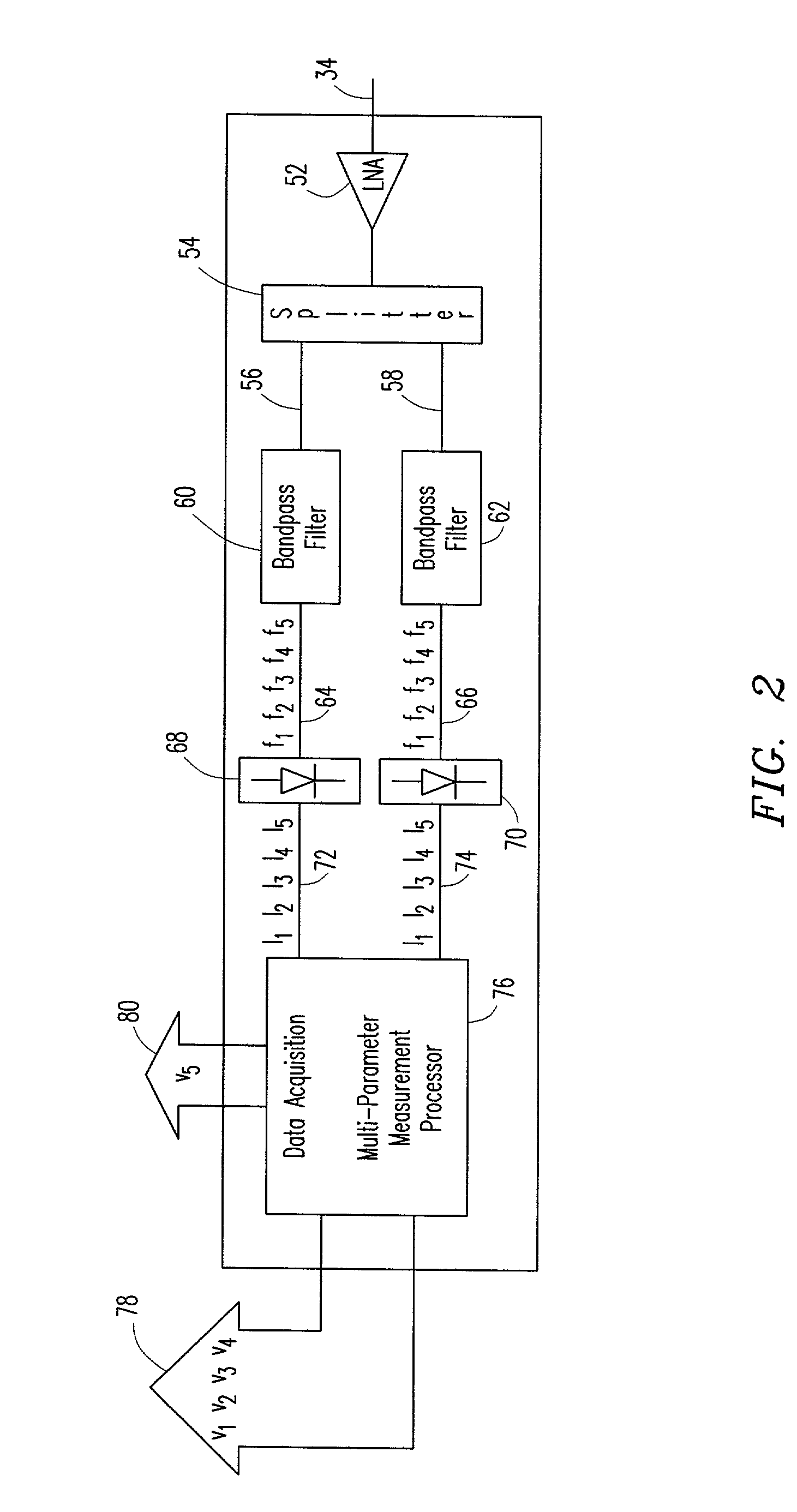Method and apparatus for first-order polarization mode dispersion compensation
a compensation method and dispersion technology, applied in the field of optical transmission, can solve the problems of significant problems, existing methods for avoiding fading in the optical transmission system, and may be sufficiently high to induce eye-closure penalties, so as to reduce the response time of the actuator used and reduce the complexity of the algorithm
- Summary
- Abstract
- Description
- Claims
- Application Information
AI Technical Summary
Benefits of technology
Problems solved by technology
Method used
Image
Examples
Embodiment Construction
[0022]FIG. 1 is a block diagram that schematically illustrates an optical transmission system that incorporates a Polarization Mode Dispersion (PMD) compensation apparatus according to a presently preferred embodiment of the present invention. The optical transmission system is generally designated by reference number 10, and includes a B Gb / s optical transmitter 12, where B is a clock frequency of the system, a B Gb / s optical receiver 14 and an optical fiber 16 for transmitting an optical signal from the transmitter to the receiver.
[0023]The PMD compensation apparatus is generally designated by reference number 20, and functions to compensate for first-order PMD in an optical signal transmitted through the optical fiber 16 of the optical transmission system 10. PMD compensation apparatus 20 is incorporated into the optical transmission system between the transmitter and receiver, and generally comprises an automatic polarization controller 22, a variable delay line 24, and a feedba...
PUM
 Login to View More
Login to View More Abstract
Description
Claims
Application Information
 Login to View More
Login to View More - R&D
- Intellectual Property
- Life Sciences
- Materials
- Tech Scout
- Unparalleled Data Quality
- Higher Quality Content
- 60% Fewer Hallucinations
Browse by: Latest US Patents, China's latest patents, Technical Efficacy Thesaurus, Application Domain, Technology Topic, Popular Technical Reports.
© 2025 PatSnap. All rights reserved.Legal|Privacy policy|Modern Slavery Act Transparency Statement|Sitemap|About US| Contact US: help@patsnap.com



